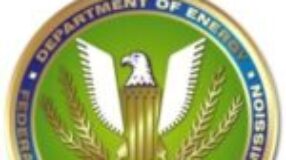Dear Ms. Barker,
The Interstate Natural Gas Association of America (“INGAA”) respectfully submits these comments in response to the United States Forest Service’s (“USFS”) request for input on revising its National Environmental Policy Act (“NEPA”) procedures. See 83 Fed. Reg. 302
(Jan. 3, 2018). This notice requested feedback on increasing the efficiency of environmental analysis as part of the NEPA process.
INGAA is a non-profit trade association that advocates regulatory and legislative positions of importance to the natural gas pipeline industry in North America. INGAA’s member companies transport over 95% of the nation’s natural gas through a network of nearly 200,000 miles of pipelines. The interstate pipeline network serves as an indispensable link between natural gas producers and the American homes and businesses that use the fuel for heating, cooking, generating electricity and manufacturing a wide variety of U.S. goods, ranging from plastics to paint to medicines and fertilizer. A number of INGAA members have rights-of- way (“ROWs”) that cross National Forest land.
In order to streamline the USFS environmental review process to support more effective and efficient regulatory action, INGAA recommends that USFS:
I. Align its regulatory review process with the schedule and administrative record of the lead federal agency reviewing a proposed activity.
USFS is often called to review aspects of a proposed interstate natural gas pipeline project that is part of a broader review by multiple federal agencies. In these instances, USFS should adhere to the lead federal agency’s schedule and administrative process to ensure that all federal reviews are coordinated to avoid duplicative efforts, leverage existing knowledge and expertise, and achieve prompt final agency action.
In the case of new or expanded interstate natural gas pipelines, the Federal Energy Regulatory Commission (“FERC”) is generally the lead agency, and USFS is a cooperating agency. To ensure that the review process is coherent, efficient, and defensible, the lead agency must establish a process and timetable within which all of the agency reviews relevant to the project will be executed. For interstate pipeline projects where FERC is the lead agency, Congress directed FERC to establish a timeline and for coordinating agencies to issue determinations within 90 days of issuance of the environmental document. See Energy Policy Act of 2005, 119 Stat. 594, Pub. Law 109-58 (Aug. 8, 2005). As a cooperating agency, USFS should defer to the timeline established by FERC for a given interstate natural gas pipeline project.
To the greatest extent practicable, USFS should also seek to fulfil its informational needs through the development of the lead agency’s record, in order to avoid duplication of effort and to ensure concurrent, rather than sequential, analysis of information relevant to its regulatory authority. Any informational gaps that preclude initiating or concluding USFS’s review within the lead agency’s timeline should be clearly and timely communicated to the lead agency and the applicant. When USFS is a cooperating agency, the USFS project manager should work with the lead federal agency to gain consensus on the environmental review process for a given federal action. Obtaining this consensus early in the project review process would help avoid project delays. Coordination among agencies improves the efficiency and quality of their reviews because all agencies will have the information necessary in the record to make their respective determinations.
Where practicable, USFS should adopt the determinations of expert agencies with primary authority to regulate matters that are relevant to, but not central to, the exercise of USFS’s authority. For example, USFS should generally defer to the U.S. Department of the Interior regarding compliance with the Endangered Species Act. Furthermore, USFS should adopt any determinations from FERC regarding compliance with Section 106 of the National Historic Preservation Act.
Where the USFS is reviewing a request for authorization, such as a special use permit (“SUP”), USFS should identify as early as possible any clarification or additional information that is necessary for its review and should do so in writing to the applicant. This helps ensure prompt completion of the necessary administrative record and avoids permitting delays.
II. Provide additional categorical exclusions from NEPA review.
The USFS should expand the list of activities that it has defined as categorically excluded from NEPA review. For example, repair or replacement activities on pipelines authorized by existing SUPs should be categorically excluded from NEPA. As with FERC’s program for installation of auxiliary facilities and replacement of facilities under 18 C.F.R.§§ 2.55(a) and (b) (2017), if the project proponents’ activities remain within the existing ROW, then no new NEPA analysis should be required. For example, if two hundred feet of pipeline needs to be replaced in an area that was previously disturbed, that replacement activity should be categorically excluded from the NEPA process because the replacement activity will not create new or additional environmental impacts.
USFS should model its practices after FERC’s regulations, which allow pipeline operators to use temporary work space outside the permanent ROW to perform replacement or auxiliary construction, provided that the associated work space is confined to that used during installation of the original pipeline facilities. See 18 C.F.R. Part 2, Appendix A. The location and width of the work space is often documented in the pipeline’s certificate and/or special use permit. However, if such documentation is not available, FERC has established guidance for the location and width of temporary work space. Specifically, a pipeline can proceed with construction activities, such as staging of equipment and stockpiling soil outside the permanent ROW as long as it is limited to a 75-foot wide ROW, inclusive of the existing permanent ROW, for large diameter pipelines (i.e., pipe greater than 12” in diameter). See id.
In addition, requests to modify existing SUPs that authorize activities confined to a previously authorized ROW and are reasonably expected not to result in significant added environmental impact (e.g., changes in vegetative maintenance practices, including the application of herbicides approved by the U.S. Environmental Protection Agency) should be categorically excluded from new or supplemental NEPA review.
III. Eliminate duplicative reviews and encourage more uniform decision-making.
To minimize the duplication of work when analyzing impacts, USFS should use findings from previously approved actions that relate to a similar type of project and location. Currently, the timing and level of analysis required in NEPA reviews by the USFS varies significantly by region, National Forest, ranger district, and proposed project type. USFS often duplicates its analysis in individual permitting reviews where similar projects, with similar environmental impacts, have been previously approved.
USFS should make previously conducted studies more readily accessible so that the public, other USFS regions, National Forests, ranger districts and other federal agencies may utilize the pertinent findings and results for other infrastructure projects. While there may be some actions with national implications that would require new and more expansive environmental analysis, most proposed actions are similar in scope to previously approved actions and are likely to result in similar impacts to the environment (e.g., a proposed utility line in an existing corridor with other similar lines; use of a previously approved access road, etc.). USFS’s permitting process would improve significantly if USFS capitalized on the findings of previously approved actions.
INGAA also recommends that USFS consider developing an effective internal USFS tracking system for natural gas pipeline projects (separate from the FAST Act dashboards) that would provide information related to specific type(s) of actions and environmental settings. This tracking system would help encourage consistency of determinations between USFS regions, National Forests, and ranger districts.
USFS should develop and share with all the regions, National Forests, and ranger districts pre-approved best management practices (“BMPs”) for certain types of projects in similar environmental settings. Sharing these pre-established BMPs or mitigation measures for specific types of projects in specific environmental conditions would remove uncertainty, improve the timing of review, and reduce needless additional analysis. Having pre-approved BMPs would also assist applicants by informing them about various mitigation options.
USFS should create a liaison in Washington, D.C. who would ensure that the districts’ reviews are conducted within the lead agency’s timeline, are consistent, and that district rangers have a contact at headquarters to raise questions or concerns that arise during the review process.
IV. Update Forest Management Plans to allow special uses for utilities.
USFS should consider utility and pipeline installations in new and revised Forest Management Plans, designate utility corridors (e.g., existing corridors that might be subject to expansion), and define BMPs for such installations. If a Forest Management Plan does not allow for or include a process for approving special uses for utilities, and a company wants to install a new pipeline, the Forest Unit may need to create a plan amendment and subject the amendment to public review and comment, which takes time. Updating Forest Management Plans to allow the issuance of a SUP for pipeline or utility use should streamline the review process for new pipeline or utility SUPs because applicants and USFS staff could tier the NEPA analysis off of the Forest Management Plan NEPA document.
INGAA appreciates your consideration of these comments and welcomes additional dialogue. Please contact me at 202-216-5955 or ssnyder@ingaa.org if you have any questions. Thank you.
Sincerely,
Sandra Y. Snyder
Senior Regulatory Attorney, EH&S
Interstate Natural Gas Association of America







